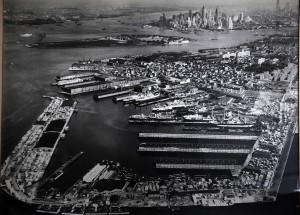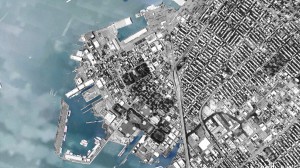Critical Issues in Landscape, Architecture and Urban Ecology in Red Hook, Brooklyn
COURSE DESCRIPTION: This is an Advanced Design studio with an emphasis on the integration of landscape and architecture through research and analysis of complex site conditions. For decades Red Hook and the Erie Basin saw heavy use and abuse as a major shipping and industrial center for South Brooklyn. Now the majority of the heavy industry as moved elsewhere and the neighborhood has blossomed as a vibrant residential and commercial district. In addition, New York City as a whole has begun to re-vitalize and re-claim much of its previously inhabitable waterfront. Red Hook and the Erie Basin are no exception to this new trend to “re-green” the waterfront of previously industrial areas in order to create new parks and public spaces. The semester will focus on developing a novel Urban Ecology within the post-industrial urban context of Red Hook, Brooklyn. Each student will complete an in-depth research and analysis of the general concepts of Urban Ecology, the site itself and architectural solutions to revitalize the post-industrial landscape.
RESEARCH, ANALYSIS + DESIGN: The landscape design will necessarily require an understanding of Urban Ecology and creative proposals for solutions to rehabilitate almost seven acres of a dilapidated and defunct Red Hook pier at Beard Street. The architectural design will focus on developing a clear and thoughtful site analysis critical to the success of any architectural project. In addition, it will important to understanding how specific programs relates to the site and the city around it. Students will be collaborate to perform site and program analysis focusing on three areas of program in New York City: libraries, small scale artisan and craft manufacturing and community health centers. How each student approaches the research, program integration and their final design will be dependent a formal thesis each student must develop.
URBAN ECOLOGY: Urban Ecology is the scientific study of the relation of living organisms with each other and their surroundings in the context of an urban environment. The urban environment refers to environments dominated by high-density residential and commercial buildings, paved surfaces, and other urban-related factors that create a unique landscape dissimilar to most previously studied environments in the field of ecology. [1] Urban ecology is a recent field of study compared to ecology as a whole. The methods and studies of urban ecology are similar to and comprise a subset of ecology. The study of urban ecology carries increasing importance because, within the next forty years, two-thirds of the world’s population will be living in expanding urban centers. [2]
- Niemela, J. Ecology and urban planning. Biodiversity and Conservation. 1999. 8: 119-131
- United Nations 2007. World urbanization prospects: the 2007 revision. UN
SITE: Your site is the pier located at Beard St. and Richards St. in Red Hook. Situated between the historic Beard Street Warehouse which already houses many local artists, retailers and manufactures and the large IKEA center to the south, the Beard Street Pier is an ideal location for development. Your project must respond to historic fabric of the neighborhood as well as look forward to how the area will develop. Integrating and understanding the topography of the site will be paramount to creating a successful project. The site will require a robust landscape proposal to both transform the topography as well as mitigate potential flood waters.






Hi, this is a comment.
To delete a comment, just log in and view the post's comments. There you will have the option to edit or delete them.